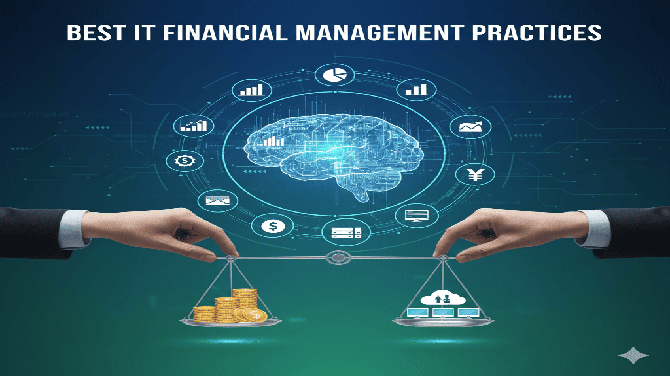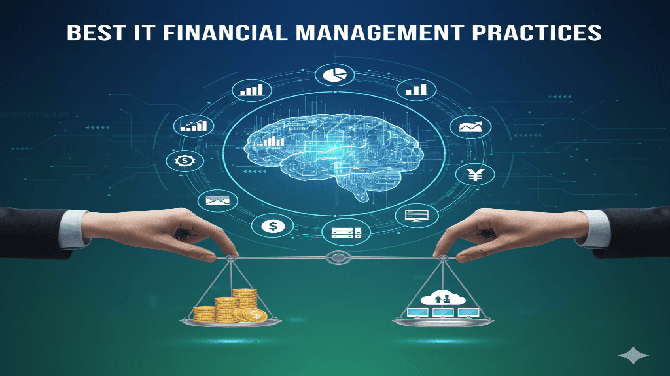
In today’s complex IT landscape, enterprises face the challenge of managing increasing technology costs while ensuring strategic alignment with business goals. Cloud adoption, enterprise applications, cybersecurity, and automation initiatives contribute to escalating IT expenses, making it essential for organizations to optimize spending. IT Cost Allocation Tools and IT Cost Modeling Software provide businesses with the capabilities to allocate costs accurately, analyze financial data, and make data-driven decisions that improve efficiency and transparency.
This article explores the significance, features, and benefits of IT cost allocation tools and cost modeling software for modern enterprises.
What are IT Cost Allocation Tools?
IT Cost Allocation Tools are software solutions that enable organizations to distribute IT costs across business units, services, applications, or projects. These tools ensure that every department or service is accountable for its IT consumption, promoting transparency and informed decision-making.
Key Objectives
-
Assign costs accurately based on actual usage or agreed allocation models
-
Enable chargeback or showback processes for internal billing
-
Improve financial governance and cost accountability
-
Provide visibility into resource consumption and cost drivers
Cost allocation tools form the foundation of effective IT financial management, allowing enterprises to link IT costs with business value.
What is IT Cost Modeling Software?
IT Cost Modeling Software allows enterprises to create predictive models of IT costs, analyze spending patterns, and simulate financial scenarios. By modeling different cost structures, organizations can forecast IT budgets, optimize resource allocation, and plan investments strategically.
Core Features
-
Scenario Planning: Simulate budget changes, IT projects, or cloud consumption scenarios.
-
Predictive Analytics: Forecast future costs based on historical usage patterns.
-
Integration with IT and Financial Systems: Consolidate ERP, cloud, and ITSM data.
-
Cost Driver Analysis: Identify the factors that influence IT spending.
-
Visualization and Reporting: Create dashboards and reports for real-time decision-making.
-
Support for Chargeback/Showback: Link cost models to departmental reporting and billing.
By combining modeling capabilities with accurate cost allocation, enterprises can achieve a holistic understanding of IT expenditures.
Benefits of IT Cost Allocation Tools and IT Cost Modeling Software
1. Enhanced Cost Transparency
Gain a clear view of how IT costs are distributed across business units, services, and applications.
2. Optimized IT Spending
Identify inefficiencies, redundant services, and underutilized resources to reduce unnecessary expenses.
3. Improved Financial Governance
Ensure accountability across departments with accurate allocation and internal billing.
4. Strategic Decision-Making
Analyze cost models to prioritize IT investments that align with business objectives.
5. Accurate Forecasting
Predict future IT costs using historical data and scenario modeling for proactive budgeting.
6. Increased ROI
Allocate resources effectively to maximize the business value of IT investments.
7. Streamlined Reporting
Dashboards and automated reports simplify financial management and audit readiness.
Best Practices for Using IT Cost Allocation and Modeling Tools
-
Adopt Service-Based Costing: Map costs to specific IT services, applications, and business units.
-
Integrate Data Across Platforms: Consolidate financial, operational, and cloud usage data.
-
Regularly Update Cost Models: Reflect changes in IT consumption, infrastructure, or pricing.
-
Use Scenario Analysis: Model different budget and resource allocation options.
-
Benchmark Costs: Compare internal IT spending against industry standards.
-
Promote Accountability: Share cost data with business units to encourage responsible consumption.
-
Continuously Optimize: Review allocations and models regularly to identify opportunities for improvement.
Conclusion
IT Cost Allocation Tools and IT Cost Modeling Software are critical for enterprises seeking financial transparency, strategic alignment, and optimized IT spending. By accurately allocating costs and modeling different financial scenarios, organizations can make data-driven decisions, reduce inefficiencies, and improve ROI. Implementing these tools not only ensures accountability and cost visibility but also empowers businesses to align IT investments with broader strategic goals, ultimately driving operational excellence and sustainable growth.







